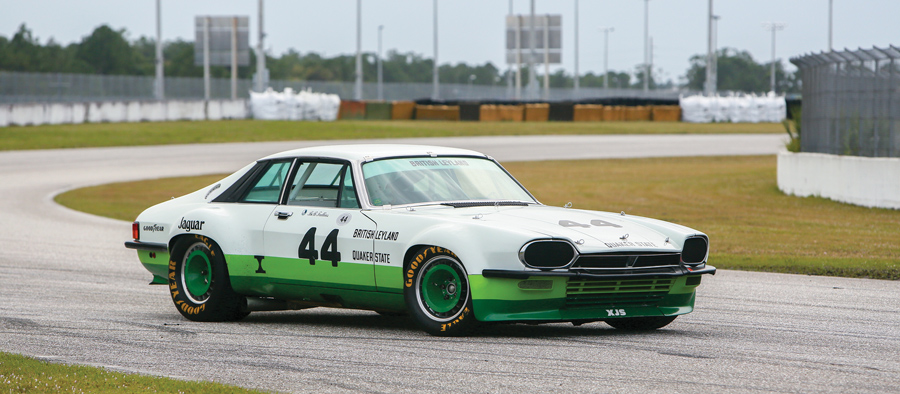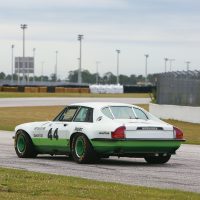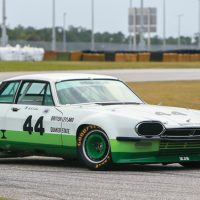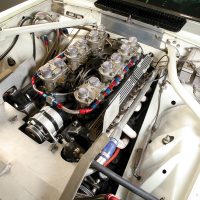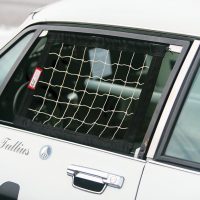SCM Analysis
Detailing
| Vehicle: | 1978 Jaguar XJ-S Trans-Am Racer |
| Years Produced: | 1978 |
| Number Produced: | One |
| Original List Price: | N/A |
| SCM Valuation: | $207,200 |
| Chassis Number Location: | Unknown |
| Engine Number Location: | Unknown |
| Club Info: | Jaguar Clubs of North America |
| Website: | http://www.jcna.com |
| Alternatives: | 1978 Chevrolet Corvette 454, 1978 Chevrolet Monza Mirage 350, 1978 Chevrolet Camaro 350 |
| Investment Grade: | B |
This car, Lot 255, sold for $207,200, including buyer’s premium, at RM Sotheby’s Amelia Island, FL, auction on March 7, 2020.
One of the most fun parts about writing the race car profiles for SCM is the variety of cars I get to talk about. Last month it was a tiny red 1955 Moretti 750 racer, and one of my main points was that though tiny and delicate, it was a serious racer.
Nobody will need such assurances for this month’s Jaguar.
Simply put, this car is a monster — a one-off, purpose-built Trans-Am racer that spent the 1978 racing season running away from big-block Corvettes. It was so fast in its day that only the tech inspectors and protest committees (of which there were plenty) believed it was legal. It even had an (unconnected) toggle switch labeled “NOX” just to drive people nuts.
A fast look at Trans-Am racing
Before we get into the car itself, there are a couple of parallel histories that should be mentioned for the sake of background.
Starting in 1966, SCCA introduced a professional race series for the new and wildly popular “Pony Car” sedans such as Mustangs, Camaros and AMC Javelins. It was a huge success with drivers and spectators, and it became the backbone of SCCA professional racing for many decades to come.
Enter Bob Tullius
Trans-Am evolved over the years, particularly as it competed with the rival IMSA series. By 1978, Trans-Am had two classes: TA1 for SCCA-prepared cars — mostly Corvettes and this Jag — and TA2 for more highly modified FIA Group 4 and Group 5 cars such as Porsche 935s.
Bob Tullius was a talented amateur racer. In the mid-1960s, he decided to make a living in the business. With some partners, he formed Group 44, a company that prepared cars for customers, fielded a professional racing team associated with British Leyland (Triumph, MG, Jaguar), and ran a sponsorship and marketing operation.
A long-running sponsorship agreement with Quaker State established the iconic green-and-white livery of the team cars. Group 44 was prominent in American sports car racing (and several Le Mans entries) from the late 1960s though 1990, and it was renowned for the professionalism and immaculate presentation of their racing operations.
Jaguar introduced the XJ-S in the fall of 1975 as the replacement for the aging V12 XKE. While both cars were far more luxurious touring cars than racers, the performance image remained essential.
Tullius had won the 1975 SCCA Championship in a V12 XKE, so it was logical to see what he could accomplish with the new model. For the 1977 season, Jaguar supplied him with a new XJ-S that his team modified into a racer. Tullius did well enough that the potential was obvious, but it was also clear that more was needed.
Creating a monster
For the 1978 season, Jaguar took a “white” chassis and body off the production line and proceeded to acid-dip it to reduce weight as far as possible.
Jaguar then shipped the bare components to Group 44’s shop in Sebring, FL, where Tullius’ mechanics used them as the basis for a pure, bespoke racing car that could pass for being a Jaguar XJ-S. They started by building effectively a tube frame inside the now-very-flimsy unibody and attached a heavily strengthened Jaguar suspension. The fenders were flared to cover huge tires on ultra-lightweight Jongbloed racing wheels, and the original Jag disc brakes were replaced with NASCAR-specification units.
The engines (they built three and changed them between every race) used the 5.3-liter Jaguar V12 block, heads and castings, but everything inside was as trick as possible. Weaver dry-sump oiling and Weber carburetors replaced Jaguar’s emission-compliant fuel injection. I don’t know for sure, but they had to have spun the engine to at least 8,000 rpm, possibly more.
The transmission was a standard Jaguar 4-speed manual, and the third member was Jag — but with a locked differential and an amazing range of final drive ratios.
The resulting race car, with Tullius driving, proved to be a formidable competitor. Corvettes won the first three races (with this car 2nd at Westwood and 3rd at Portland). Tullius then ran the table, winning all the final seven races to win the TA1 championship with almost twice the points of the 2nd-place finisher. With the championship won, Group 44 raced it one last time at an IMSA race at Daytona, then trucked it to Sebring and stuck it in the back corner of a hangar. It sat untouched for the next 29 years.
Back in the light
In late 2007, Jaguar collector Gary Bartlett heard that Tullius was considering selling, so he got on the phone and made a deal to buy the car as it sat.
Bartlett then had his team rebuild the car mechanically, leaving the original paint, peeling decals and rock chips exactly as they had been when the car was put away. In this form he took it to track days, shows and the Goodwood Festival of Speed over the next five years. He told me that though it was a bit of a tank compared to his C- and D-types, it was great fun to drive: insanely fast but intimidating.
It became more fun after the spool rear end was replaced by a limited-slip, making it easier to turn.
Having had his fun with it, Gary sold it to a French collector in 2013 for roughly $200,000. I don’t know how much intervening use the car has gotten, but the fact that it acquired FIA HTP certification suggests that it has seen European competition. However, the car’s retention of original paint and patina suggests that use has been gentle. It sold this time for essentially the same amount as seven years before.
What the market said
The conundrum here is that this is an important and successful racing Jaguar that has been stuck at weapons-grade market value — roughly one-twentieth of a C-type or a D-type — for its entire life. Intuitively, you would expect it to have more collector value than the market’s latest verdict.
My best guess why this car is stuck at weapons-grade value comes as two points:
First, the car is extreme enough that it could never be used on the road; it is strictly a track toy.
Second, its success was purely in American racing, beating Corvettes. Collectors tend to put higher value on European racing success. If this car had run Le Mans, it would be far more desirable.
It is a lot of car for the money, though.
I’d be hard pressed to come up with a more cost-effective racing option from that time period — particularly if you want something more exotic than an American V8. Then and now, $200k is apparently what the market says it’s worth. I’d say fairly bought. ♦
